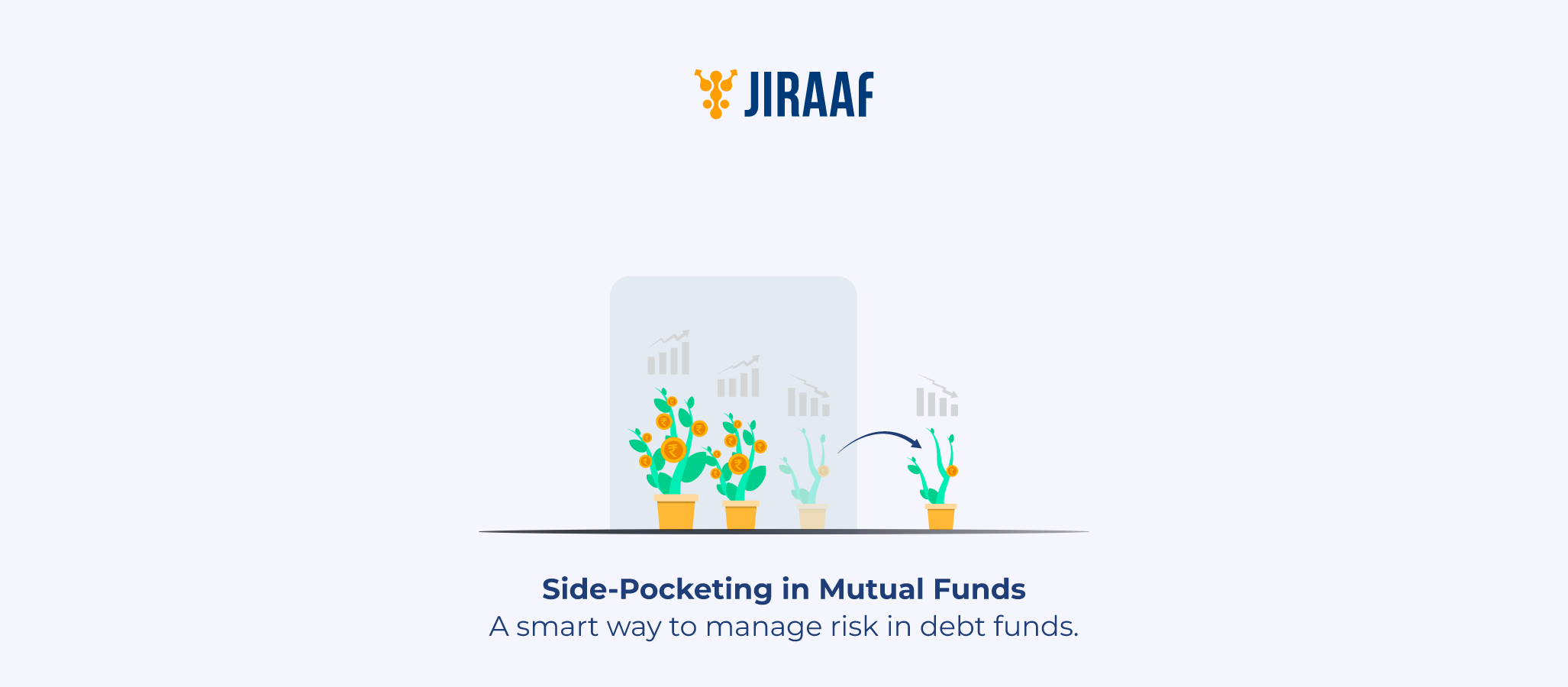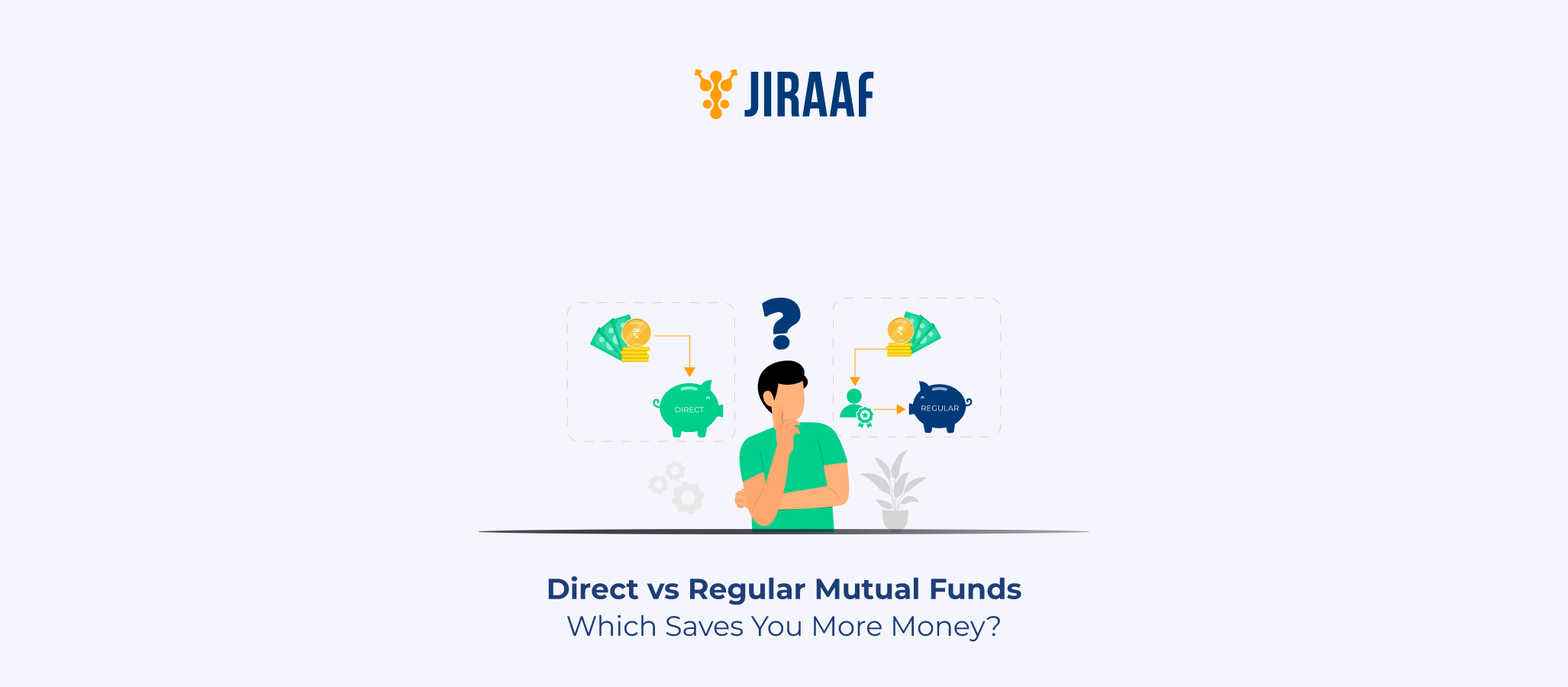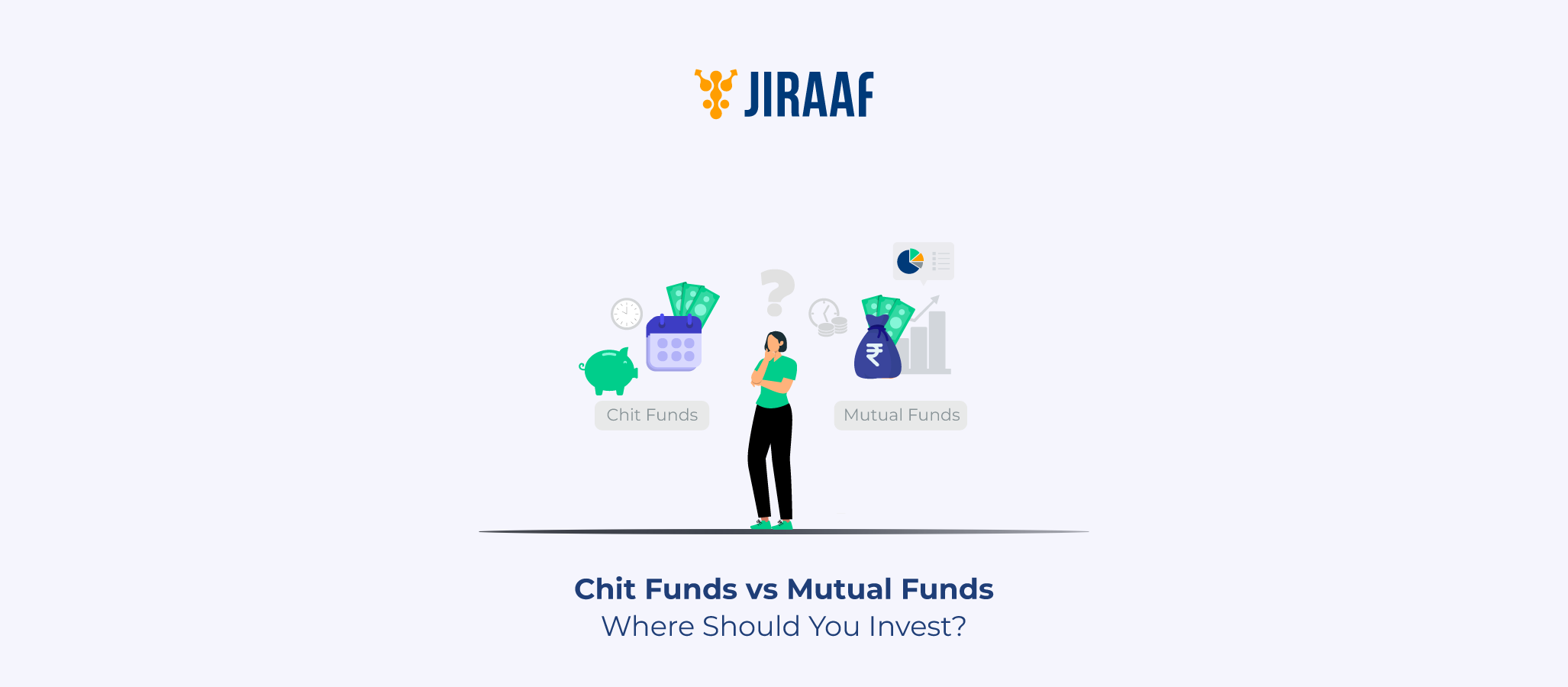What Is Side Pocketing in Mutual Funds?
Mutual fund managers isolate distressed, illiquid, or defaulting assets into a distinct “side pocket” portfolio as a risk management tool. This enables the main fund to continue operating with improved holdings, thereby enhancing NAV transparency and safeguarding your investments. Only assets recognized as troublesome are relocated, leaving the balance of the portfolio untouched for future subscriptions and redemption.
How Side Pocketing Works: A Step-by-Step Breakdown
- Identifying distressed assets: A credit event, such as a rating downgrades, default, or liquidity crisis, initiates the process.
- Segregation: The asset management company (AMC) modifies the scheme information document (SID), obtains trustee permission, and forms a separate portfolio.
- Dual-NAV structure: The original fund’s NAV is modified downward, deducting the distressed asset value, and a new NAV is generated for the side-pocketed units.
- Investor treatment: Existing investors are allocated proportional units in both the main and side-pocket portfolios. New investors invest exclusively in the main fund. Current investors have a 30-day no-exit-load opportunity to redeem. After that, the side pocket is non-redeemable until asset recovery.
- Recovery distribution: Once the separated assets are liquidated/recovered, the profits are dispersed to the side-pocket unit holders.
Why Fund Houses Use Side Pocketing
Side pocketing comes with multiple goals:
- Protects main fund NAV: Prevents distressed assets from dragging down a fund’s current value.
- Mitigates redemption pressure: Stops the panic selling of good, strong assets to fund losses.
- Ensures fairness: Productivity from distressed assets is granted only if you have already invested, thus making it fair to you and other potential investors.
SEBI Guidelines on Side Pocketing
SEBI has established clear guidelines in December 2018 under Regulation 18(5A), which include:
- Eligibility is limited to debt funds with ≥ ₹1,000 crore AUM and ≥ 5% exposure to distressed assets.
- Amendment of the scheme information document (SID), 30‑day exit-free window, and trustee approval are all mandatory.
- Dual-NAV disclosure, periodic valuation, and open reporting are necessary.
- To offer liquidity, the side pocket must be exchange-listed within 10 days.
- Expense ratios are only applied when recovery occurs, and clawbacks are imposed if misuse is discovered.
Pros and Cons of Side Pocketing for Investors
Pros
- Shields main valuation from deep credit events.
- Stabilizes liquidity and maintains your information in confidence.
- Rewards you if you are invested for the long term without penalizing newer investors.
Cons
- Side pocket valuations can be dense due to illiquidity.
- Liquidity is frozen, and redemption is postponed until complete recovery.
- Risks of misuse if managers strategically isolate underperformers.
- Dual-portfolio complexity adds tracking burden for you.
Examples of Side Pocketing in India
- Tata Mutual Fund & DHFL (2019): When Dewan Housing Finance defaulted, Tata AMC made its first move to side pocket three debt schemes—Tata Corporate Bond Fund, Tata Medium Term Fund, and Tata Treasury Advantage Fund—resulting in NAV declines of 30%, 12%, and 4% respectively.
- Franklin Templeton (2020): Though it wound up with six credit funds entirely, the groundwork of side pockets had been laid in SEBI’s 2018 framework.
Should Investors Be Worried About Side Pocketing?
Side pockets are a tool, not a red flag. It illustrates cautious management of risks under regulatory control. You should:
- Review the scheme disclosures to better understand side pocket triggers.
- Evaluate fund repute and trustee independence; funds with solid governance are less likely to abuse the mechanism.
- Monitor recovery progress by tracking side pockets and individual NAVs.
- While frozen capital can challenge your patience, the alternative – mixing bad assets with strong ones – is likely to hurt you.
Conclusion
SEBI-regulated side pocketing protects you in debt mutual funds by isolating weak assets and stabilising performance. The dual-NAV disclosure, exit provisions, and regulatory safeguards ensure a balance between liquidity management and recovery potential. To invest wisely, it’s important to understand which plans enable it, monitor side-pocket movements, and plan accordingly.
FAQs
What is side pocketing in mutual funds?
It is the segregation of distressed/illiquid assets into a separate portfolio with its own NAV to protect the main fund from volatility.
When is side pocketing typically used by fund houses?
Triggered after a “credit event” like a downgrade, default, or liquidity freeze, often under ≥5% exposure criteria for large funds.
What are SEBI’s regulations on side pocketing?
Side pocketing involves trustee approval, SID amendments, dual NAV disclosures, a 30-day exit window, and exchange listing within 10 days, per regulations rolled out in December 2018.
Can I redeem money from a side-pocketed fund?
No, not immediately. You can only exit within the 30-day window postsegregation; afterwards, capital is locked until asset recovery.
Discover fixed income investments with Jiraaf, a SEBI registered online bonds platform that educates and brings access to a wide array of bonds. Sign up today to explore diversified fixed income investment opportunities to support your goal-based wealth creation journey. Start investing!



